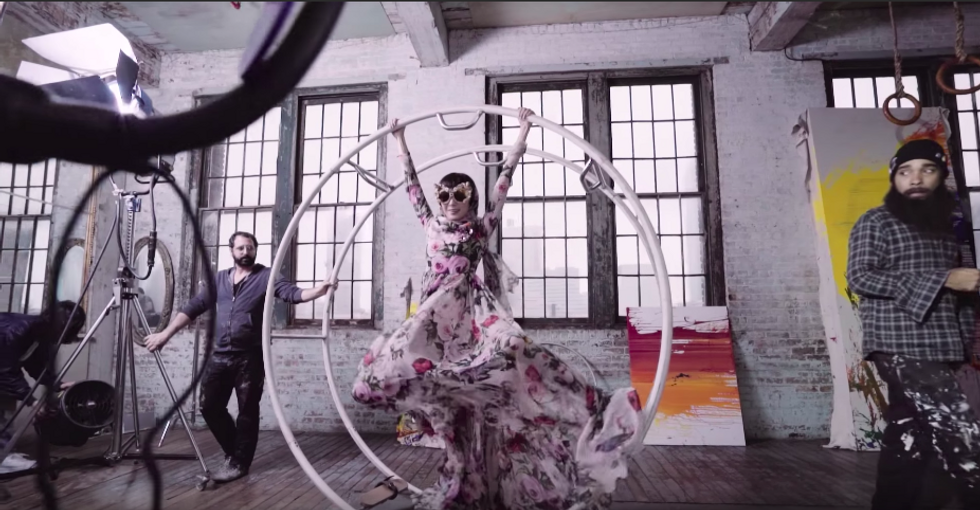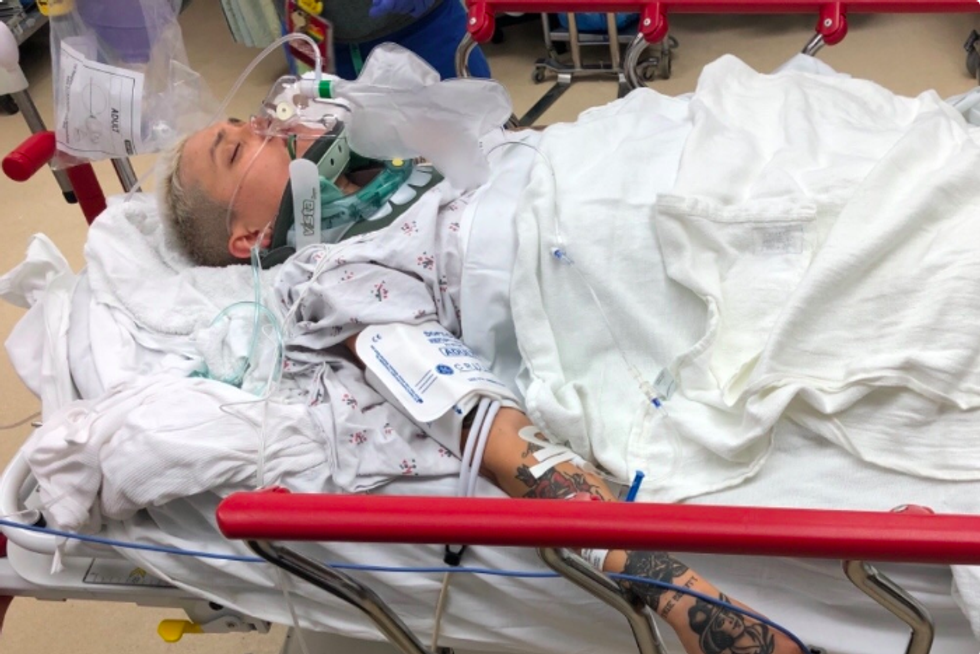TJ, a non-binary model signed with Freedom, JAG, and Scout agencies, was in a severe motorcycle accident on April 27, 2019. The accident left their previously broken left leg with a crushed knee, fractured bones and arterial bleeding. Upon arriving at the hospital, TJ's medical bill started around $100,000. That amount has risen and will continue to rise as their care and needs persist.
What's most alarming about this story is that TJ doesn't have health insurance.
With a sizable following and a helpful partner, a good chunk of TJ's bills will likely be paid for by a Go Fund Me account. Notable people have donated to the fund, including actress and producer Lena Waithe, the team at Kenneth Cole, Lindsey Clarke of Sketchers, David Roth of rock band Van Halen, Savage x FENTY and many other individuals and teams for which TJ has modeled.
Aspiring models flock to big cities such as New York or Los Angeles and work as independent contractors rather than legitimate employees. In the United States, independent contractors, commonly referred to as "freelancers," are required to pay their own Social Security and Medicare taxes.
I'd consider myself somewhat good at managing my finances. But I'm confident when I say I could not handle tax season as a freelancer. Freelancers regularly owe money to the government come April. After knowing the joy of a tax return, freelancing is not in my future.
According to the Bureau of Labor Statistics, in May 2018, a model made on average $11.43 per hour, amounting to $23,770 a year. In 2016, there were around 4,800 jobs in the modeling industry. Many models were left unemployed for an amount of time, uncertain of when their next paycheck would come or where it was coming from.
Say what? I lived in New York for two years making between $40,000 and $45,000. Surviving on a meager $12 an hour gets you some food but definitely not a roof over your head. More like a blanket and a bench in Central Park. I think a strong pat on the back is deserved for people that move to big cities with no guarantee of an income. That's the basis of hustling, really.
In 2011, NPR's "Talk of the Nation" aired an interview with Ashley Mears, an American writer and former fashion model. In the interview, Mears shared a relatable story about a friend she'd met in the industry.
"She booked a couple of lucrative jobs that paid her very well and had residuals with TV commercials. But after a few years, her earnings ran completely dry because she ended up getting sick, and without health insurance she had to pay out of pocket for some pretty straightforward procedures that were very costly."
The Kaiser Family Foundation stated that 27.4 million non-elderly individuals remained without coverage in 2017. Doctor and hospital visit charges are never set in stone. According to the Healthcare Bluebook, visiting an ER with a minor problem can cost anywhere between $395 to $1,500. Visiting an ER with a very severe problem can cost between $978 to $3,604 and upward. Those prices don't include overnight stays, surgery or additional care. Someone with insurance is likely to pay only a quarter of a bill, if not less. The size of a medical bill with insurance coverage compared to one without is astronomical.
With a common industry entry age of 16, most models are maneuvering the industry almost completely alone. At such a young age, it's likely they aren't aware of the services provided for them that make sure they are being treated fairly and respectfully by agencies. I don't even know all the services provided to me as an employee of a large school district. Adulting is like being dropped 10 miles from shore and told to swim back. No one tells you there's a jet ski a couple of yards away.
The Model Alliance is an organization that, "promotes fair treatment, equal opportunity, and sustainable practices in the fashion industry, from the runway to the factory floor." It acknowledges common areas of concern within the industry and leads individuals to the right place to apply for health insurance.
The Better Business Bureau suggests "modeling is a difficult profession to break into. Therefore, if [one is] not accepted by several reputable managers and agents, [one] may want to reconsider [their] career choice." Enough said.
Not only do models face injury on set, but their private lives and hobbies can also lead to disaster. Consider TJ as an example, but also the dangers of simply living in a crowded commuting metropolis. Living without insurance is not only unpredictable but insecure. Being a model may be glamorous but makes life uncertain. I'm only 5"4', but count me out.












